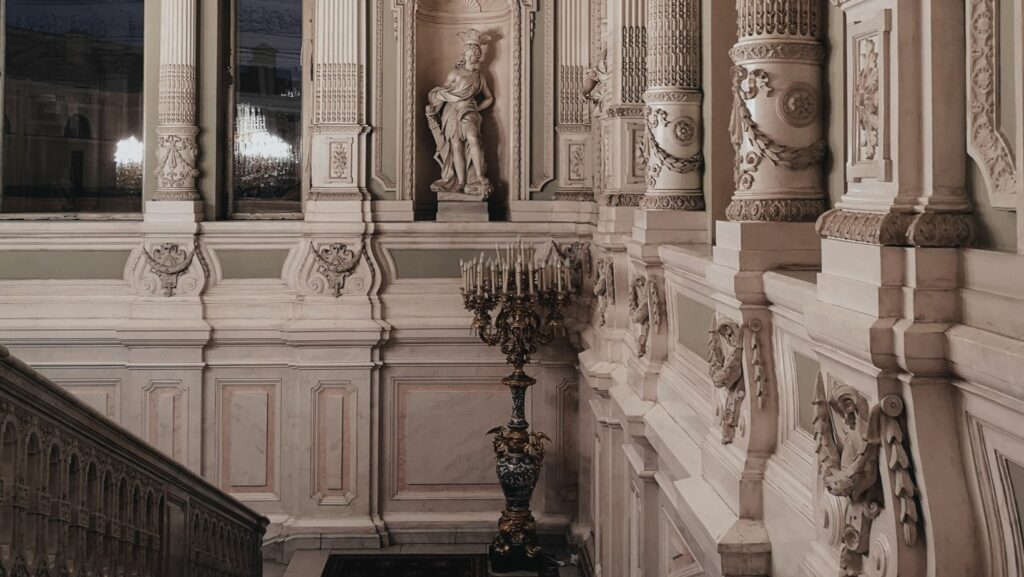Step back in time to the grandeur of the Renaissance, an era renowned for its groundbreaking art, architecture, and design. This period, spanning the 14th to 17th centuries, left an indelible mark on the world of interior design that continues to inspire today.
Renaissance interior design is a blend of the ornate and the sophisticated, a reflection of the period’s cultural awakening. It’s an aesthetic that champions symmetry, proportion, and a keen eye for detail. Let’s embark on a journey to explore the timeless appeal of this style, its key elements, and how it’s making a comeback in contemporary homes.
Renaissance Interior Design

Renaissance interior design, born during the European cultural revival between the 14th and 17th centuries, is recognized for its aesthetic sensibilities that incorporate symmetry, detail, and proportion. Art and architecture from this era, revered for its ornate and intricate elements, powerfully influenced the interior design style of the time. Venice and Florence, pivotal centers of the Renaissance movement, emerged as hotbeds of these sophisticated interior designs.
Substantiating this claim, prominent art historians mention that influences ranged from Roman and Greek antiquity, seen in column-like solomonic accents, noble sculptures, and allegorical depictions. Further down the timeline, the 19th century bore witness to a revival of this aesthetic, known as the Neo-Renaissance movement. This revival saw an infusion of Renaissance elements into contemporary architecture, sparking modern interest and appreciation for the style.
Impacting the 21st-century decor scene, Renaissance interior design aesthetics continue to be integrated into contemporary homes, symbolizing sophistication and a keen eye for historical detail.
Core Elements of Renaissance Interior Design
Renaissance interior design rests on a foundation of three essential elements: symmetry, proportion, and fine detail. First, symmetry presents itself in the balanced, orderly arrangements seen in many Renaissance-era buildings. For example, a room might be divided in symmetrical halves, with identical furniture pieces placed with precision to mirror each other.

Secondly, proportion plays a critical role. Designers of the Renaissance valued the harmonious relationship between different elements in a room. They favored unified design over eclectic mixes. A light fixture, for instance, wasn’t picked just for its beauty, but for its compatibility with the room’s size and its ability to complement other pieces.
Final core element is the use of fine detail. Renaissance designs showcase a great depth of detailing. Whether it’s intricate woodwork or rich, opulent fabrics, each detail contributes to creating an atmosphere of elegance and grandeur.
Modern Interpretations of Renaissance Interior Design
Renaissance interior design, with its elegant symmetry and proportion, continues to influence modern homes. Contemporary designers often incorporate defining elements such as finely carved walnut or oak furniture, grand paintings, and statuary. They remain faithful to the love of detail, using rich textures like velvets and brocades, ornate fireplaces, and intricate objects like candlestick holders and chandeliers. Yet, they infuse freshness into the design, using Renaissance principles within a modern context. For instance, a minimalist room might feature a singular, ornately carved piece as a focal point. Colors and patterns, once reminiscent of historical scenes, now echo in abstract or modern art. Adaptations of architectural details , like columns and arches, contribute to a unique blend of old and new, embodying the grandeur of the past with contemporary simplicity.
Incorporating Renaissance Elements Into Modern Spaces

Renaissance interior design’s rich history and timeless elegance continue to inspire today’s designers. It’s a testament to the enduring allure of this design philosophy that it’s been seamlessly adapted into modern spaces. By incorporating grand furnishings, intricate architectural details, and rich textures, they’re able to capture the essence of the Renaissance era while maintaining a contemporary edge. The fusion of old and new gives spaces a unique character, marrying the grandeur of the past with the simplicity of the present. Whether it’s a Neo-Renaissance revival or a modern interpretation, the key lies in the thoughtful application of these elements. As we’ve seen, Renaissance interior design isn’t just about replicating a historic style—it’s about understanding its core principles and adapting them to today’s aesthetic. It’s about creating spaces that are both visually stunning and deeply rooted in history.



